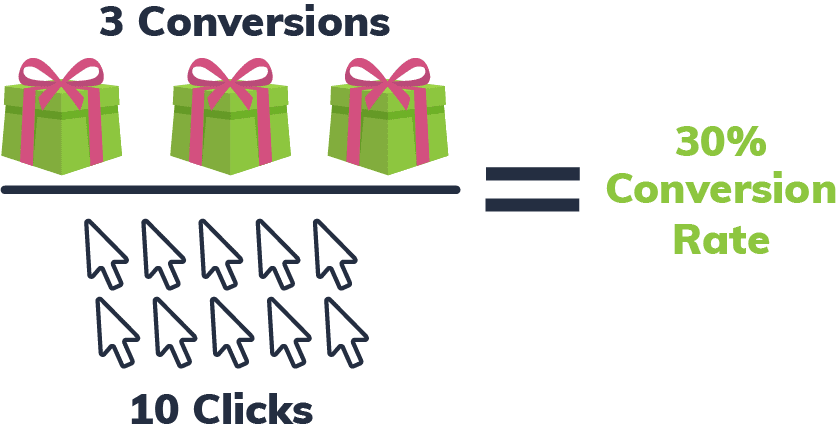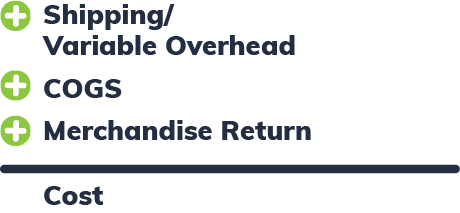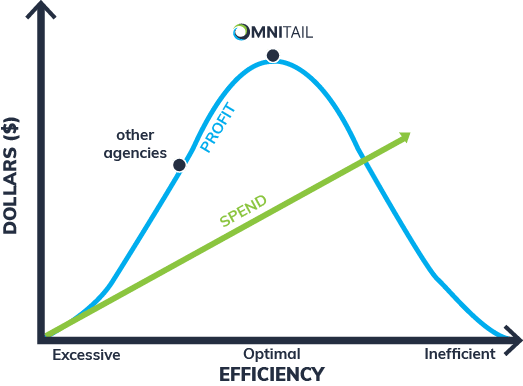As the holidays grow ever closer, retailers are fast preparing for the shopping season. In recent blogs, we’ve covered how to plan for Black Friday, product feed optimizations for the holidays, and Black Friday tips and tricks for Amazon.
However, all of these recommendations are useless if you aren’t correctly measuring campaign performance! Today, we’re going to cover five important holiday retailer metrics retailers should track during the holiday season.

Key Holiday Retail Metrics

1) Conversion Rate
Why You Should Track Conversion Rate
Conversion rate isn’t the first metric to come to mind for most retailers. It’s where the sales process starts, however, and is arguably the metric with the most impact on sales and revenue. A poor conversion rate translates to wasted clicks — and wasted ad spend. Learn more about optimizing conversion rate in our blog: “What’s in a Conversion Rate?“
Site Experience Impacts Conversion Rate
Site experience is a big factor—especially on mobile! Tools like Google’s Test My Site can offer projections for lost revenue due to a slow site, and help you figure out how to improve. It’s best to put these optimizations into action as soon as possible, so your customers have the best possible shopping experience in November and December!
Pricing Impacts Conversion Rate
Pricing is also a factor in customers’ willingness to convert. If your conversion rates have been slipping, it’s worth taking a look at your prices to see if they are still competitive with the market, or if there is room to offer promotions like free shipping on some items.


2) Sales
Use Last Year’s Sales to Analyze this Year
This is a no-brainer —of course you want to track sales! However, last year’s sales numbers (and product breakdown) can be just as useful to analyze as this year’s. If last year’s sales were concentrated highly in a certain seasonal product segment, it’s worth evaluating the bids for those items ahead of the holiday season.
This is where good, data-driven product segmentation comes into play. If you already know precisely where those ads are serving, it’s easy to measure their performance and make adjustments if needed.
Use Other Metrics to Provide Context for Sales
A couple of other holiday retail metrics provide important context for overall sales numbers: cost per order, and average order value. A slight decrease in the number of sales might still mean an overall increase in revenue— if it’s paired with a large bump in average order value!
Likewise, you may be able to tolerate an increase in cost per order, if that increased is paired with a larger increase in both sales and average order value. Conversely, more sales isn’t necessarily a good thing, if you’re spending too much to acquire the additional orders.


3) Revenue
Costs Give Context to Revenue
Revenue is probably the #1 metric we see clients focus on in the holiday season. It’s absolutely important – but it’s best viewed with some key context. Costs (which we’ll cover in-depth in the next section) are the most important factor in analyzing revenue numbers.
If you’ve drastically cut advertising costs, or have struck a much better deal with your manufacturer or vendor this year, you could wind up seeing a reduction in revenue – but an increase in the amount of money you actually get to keep!
On the other hand, as with sales, an increase in revenue isn’t necessarily a good thing if you’re having to spend exponentially more to acquire it.
Other Factors that Impact Revenue
Other factors include your own business goals —have you pivoted to a new product line? Adopted a new subscription model, that pushes the focus from short-term one-off sales to a longer, more steady revenue stream? Each of these could spell a reduction in immediate revenue, but a much healthier business down the line.


4) Cost Metrics
Costs are a key metric to track all year, but take on an extra importance in the holiday season. As we highlighted in the last section, an increase in revenue isn’t nearly as impactful if almost all of that increase is eaten by higher costs. Specific costs vary according to the business, but common holiday retail metrics include:
- Cost of Goods: Next to ad spend, this is the most important metric you can track. At Omnitail, we track these on the ad group or product group level to ascertain which segments are really adding to the bottom line – and which are too costly to be profitable.
- Ad Spend: This metric can be really volatile in the holiday season, as competition for impressions rises. A solid product segmentation strategy (like the one we apply for our clients!) helps drive spend where it matters most, while preventing wasted spend on products or search terms that don’t convert.
- Shipping/Variable Overhead: These costs often rise in the holiday season as well. Many retailers offer free shipping (or a lower threshold for free shipping than is present the rest of the year). Larger retailers may need to hire extra temporary help to fill orders, or pay overtime for their existing staff.
- While it’s not always feasible to measure these costs exactly, tracking them where possible can provide important context for revenue and sales numbers (and even help you plan for next year.)


5) Profit
This is the single most important metric we recommend retailers track, any time of the year. It’s even in our tagline! Profit is the only metric that accounts for sales volume as well as efficiency. It’s calculated using both revenue and any associated costs—showing you the full impact of advertising on your business.
Furthermore, profit benchmarks can be tailored to fit an individual business. Omnitail analysts work closely with each client to determine the cost factors that are important to their bottom line, and will craft an advertising strategy to fit.
Shaping your holiday strategy to profit maximizes your business potential, by freeing you from arbitrary ROAS or spend targets.

The Best Way to Track Holiday Retail Metrics
We’ve highlighted five holiday retail metrics to track during the holiday season—but this isn’t the full story! If this time of year represents a large percentage of annual sales, it’s worth undertaking a much more detailed analysis. At Omnitail, we offer robust, multi-attribution—so our clients have all the information they need to make crucial business decisions. Get in touch today, and see how we can help make this holiday season your best one yet!








